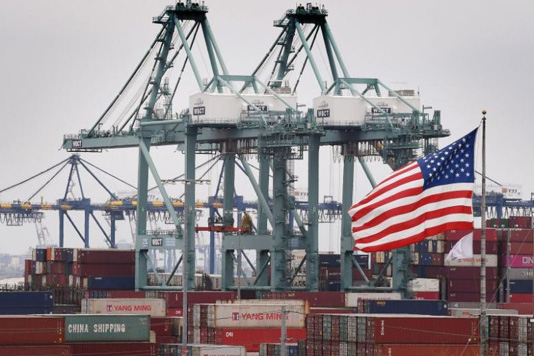NEW YORK, July 21, 2019 (BSS/AFP) – Big US companies are accelerating
efforts to move more of their supply chains from China to neighboring
countries in light of Trump administration tariffs.
Companies in sectors such as technology, clothing and footwear are
exporting more goods from emerging giants including Vietnam and Malaysia,
data show.
At the same time, the shift has exposed the murkiness of trade export
rules, putting a premium on lawyers expert in the minutiae of US customs
rules.
“We have a lot of questions from our members,” said Sage Chandler, vice
president of international trade at the Consumer Technology Association.
“Companies are trying to find ways to avoid having to pay 25 percent.”
Some companies may be pushing the envelope a little too much, violating US
rules against “transhipments,” the routing of China-made goods through other
countries to evade tariffs, legal experts say.
– Speeding shift from China –
President Donald Trump since last year has slapped 25 percent duties on
$250 billion worth of Chinese imports and threatened additional levies on all
other Chinese items coming to the United States — though the two sides
agreed last month to hold their fire for now.
Trump’s trade measures have led some multinationals to fortify their North
American operations and others to transfer some manufacturing capacity from
China to any number of countries, including Vietnam, Cambodia, Malaysia, the
Philipines, Bangladesh, India and Ethiopia.
Exports of computers and electronics from Vietnam to the United States
have risen 71.6 percent in the first five months of 2019 compared with the
year-ago period, according to government data.
The pattern has also held for other machines and equipment, with exports
from Vietnam rising 54.4 percent over that period.
Even before Trump targeted China on trade, US companies had been reducing
their dependence on China because of increasing production costs and elevated
transport expenses compared with other Asian countries.
But the trade war has sped up those moves.
Ralph Lauren has “accelerated the diversification of our supply chain to
mitigate the long-term impact of any potential tariff outcomes,” said a
spokesperson for the clothing company, adding that tariffs have so far not
hit the company’s goods.
Xcel Brands, which owns Isaac Mizrahi, Judith Ripka and other fashion
houses, will cease manufacturing in China in 2020, a big shift from two years
ago when the country was the source of 100 percent of its merchandise.
The company has moved clothes-making operations to Vietnam, Cambodia and
Bangladesh, and is exploring adding capacity in Central America, Mexico and
Canada.
This retooling, which was in the works prior to the tariffs, could boost
profit margins, said Xcel chief executive Robert D’Loren. The trade war with
China “accelerated our sourcing diversification efforts,” he said.
A decade ago, more than 90 percent of US footwear was made in China. But
today, the figure is 69 percent, said Matt Priest, president of Footwear
Distributors and Retailers of America.
– Problem solved? –
Yet shifting production outside of China to other Asian centers is not
necessarily a panacea.
Many of these countries lack the roads, airports and other vital
infrastructure of the world’s second-biggest economy. And there is no
guarantee that the emerging manufacturing venues will be safe from US tariffs
down the road.
Companies can also run afoul of US law if goods are made in China and then
sent to an intermediate destination to dodge US tariffs.
“I have noticed an upswing in the number of tariff evasion cases that have
been made public and also in the number of inquiries my firm has received,”
said Jeff Newman, a Boston attorney.
A June Wall Street Journal report showed that billions of dollars of
Chinese-made goods were being rerouted in this manner through Vietnam,
Malaysia and the Philippines.
US customers officials did not respond to request for comment.
Retail giants such as Walmart and Target say significantly reducing their
reliance on Chinese-made goods is unrealistic because of the demand for low
prices.
That means retailers are more likely to stop producing goods with very low
profit margins than to incur additional costs by moving production out of
China, according to Priest of the footwear distributors association.
He points to flip flops, which earn returns of only around six or seven
percent.
“It won’t be worth moving to Vietnam for six or seven percent-margin
shoes,” Priest said.
“That shoe is not worth it.”



